teachers'domain: Digital Media for the Classroom and professional Development
User: Preview
When winter arrives, most people turn up the heat at home or throw on a jacket when going outside. But what do you do if you're an animal living in the wild?
CMS PREVIEW MODE
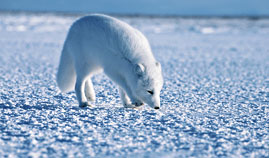
Animals look and act differently from each other. Their physical characteristics (the way they look) and behaviors (the ways they act in their environment) are called adaptations. Adaptations help animals survive, or stay alive, where they live. When conditions change—for example, when seasons change—animals sense this change in conditions and respond with changes of their own.
It's important to know that adaptations appear gradually, and that not every animal species evolves adaptations needed to survive changing conditions. The ones that don't evolve eventually disappear, or go extinct.
In the box below, write down two or three examples of changes in environmental conditions that might cause animals to change the way they look or act in order to survive.

Goals
Here are the big ideas you will learn about in this lesson:
Strategies
You will be using many reading and writing strategies to complete this lesson. The key strategies that you will focus on are:
Vocabulary
Read these words and their definitions. When you see them, you may click on them to read the definition again.
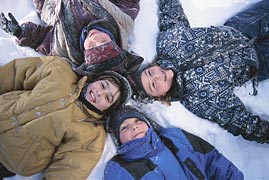
You're an animal, too. How do you respond to changes around you? For one thing, as seasons change from summer to fall to winter, you dress according to the cooler outdoor temperatures. Dressing warmly can be considered a learned behavior—something you are either taught to do or learn to do through experience.
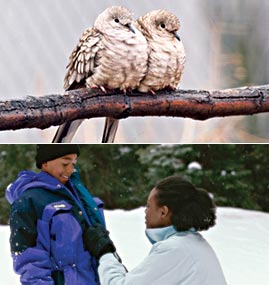
Your body also has its own built-in response to changes in the environment. To keep from getting too cold, your body shivers, or shakes. This is a response that you cannot control, sometimes called an instinct. Shivering is not a learned behavior—it is an instinct you are born with. Most living things respond to changes in conditions around them because of instincts.
How do humans respond instinctively to these environmental conditions?
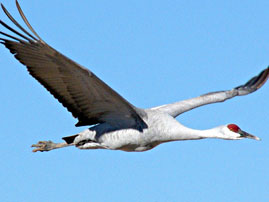
There are three basic strategies, or plans, that animals use to survive the change in conditions each winter. These survival strategies are migration, hibernation, and remaining active.
Each winter, shorter days and falling temperatures are signs for some animals to seek an environment with better weather and a steady supply of food. Moving from one place to another, where the chance of survival is better, is called migration. The longer the migration, the harder it can be on the animal. Some spend too much energy on their journeys and die. Others meet difficult weather conditions, are exposed to disease, or get attacked by other animals.
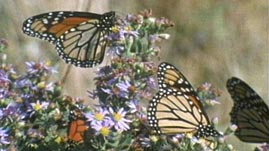
Video: 2m 20s
Types of birds, fish, mammals, and insects migrate. For example, every year, monarch butterflies migrate in great numbers from the U.S. to forests in a specific mountain range in Mexico. On the first day of fall (the autumnal equinox), these butterflies begin a journey that can reach more than a thousand miles. They depend on a natural ability to find their way called a homing instinct. Click "View" on the left to watch this video about the monarch butterflies' migration.
Then write down one advantage and one disadvantage for animals that use migration as a survival strategy.
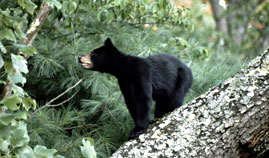
While some animals miss winter because they go away, others sleep through it in a protected place. When an animal hibernates, its heart rate slows and its body temperature drops for a long period of time.
Some animals that hibernate may wake to eat several times during winter. However, most survive on fat they have built up in their bodies before winter. A hibernating animal such as a bear can only sleep as long as this stored fat lasts. If it wakes early and cannot find food nearby, it may starve and die.

Video: 3m 23s
One type of frog hibernates in an unusual way. It has the ability to freeze solid in extremely cold temperatures and then thaw when it warms. It does this without causing any harm to itself. Something special found in its blood acts in the same way as liquid antifreeze, which keeps the water in a car's radiator and engine from freezing in cold temperatures. The frog produces its own form of antifreeze. Click "View" on the left to watch a video about this different form of hibernation.
Then write down one advantage and one disadvantage for animals that use hibernation as a survival strategy.

Some animals neither migrate nor hibernate when winter comes. Instead, they remain active in their usual environment. To help their survival chances, these animals experience a change or changes in their bodies as the conditions change around them. Most of these changes help them from losing heat and energy.
Remaining active in winter keeps an animal in its home range, the area it uses to find food. However, it may have to expand this range because there is less food available. If snowfall is heavy, animals will have to use up more energy, which can make surviving even more difficult.

You've already learned how most animals use one of three main strategies to survive each winter: migration, hibernation, or remaining active. Here are examples of physical properties that certain animals have that support these strategies.

Document
You have been introduced to the three main strategies that animals use when winter comes. You have also learned about some of the special adaptations animals have to help them survive. Now you will have the chance to read about these survival strategies in greater detail. Click "View" on the left to open the reading passage.
Then show what you've learned by answering these three questions. Be sure to save all your answers before you go to the next screen.
Interactive
You will now check your understanding of the vocabulary words for this lesson by placing them in sentences. Click "View" on the left to begin the activity.
Before moving to the next screen, choose two words from the vocabulary list and write a new sentence for each word.
Vocabulary words: behaviors, adaptations, survival strategy, migration, hibernation, camouflage
Interactive
As you saw and read on the previous screens, different animals respond in different ways when conditions change around them. In this activity, you will sort information to show how different animals use different strategies—migrating, hibernating, and remaining active—to survive winter.
Click "View" on the left to begin the activity. Your teacher will review the answers with you.
Then, before moving on to the final assignment, you may want to watch this lesson's videos again or reread the passage.

Video: 2m 20s

Video: 3m 23s

Document
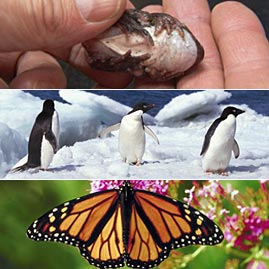
In this lesson, you have learned about the three different survival strategies most animals use each winter. You will now write an essay that shares what you have learned and what you think about it.
Begin by reviewing your notes. Click "review my work" above and view or print out the screen that pops up.
Final Assignment Instructions
Teachers' Domain, Surviving Winter, published December 13, 2010, retrieved on April 3, 2025,
http://www.teachersdomain.org/resource/midlit10.sci.splwinter/
Media Type:
Self-paced Lesson



Funding for the Walmart Middle School Literacy Initiative on Teachers’ Domain is provided by the Walmart Foundation. Early funding for Inspiring Middle School Literacy was provided by the Leon Lowenstein Foundation.
National K -12 Subject:
WGBH is trying to develop materials that better meet the needs of our users. Please take this brief survey to share how you use these resources and to provide feedback on your experiences using these materials. Take the Survey!
In this self-paced literacy lesson, students watch videos and use an interactive activity to learn how animals survive the change in conditions that occurs each winter. Students develop their literacy skills as they explore a science focus on varied physical and behavioral adaptations. During this process, they read informational text, learn and practice vocabulary words, and explore content through videos and interactive activities. When they are finished, students select and complete a writing assignment offline.
This is a student-directed lesson. Students will complete the lesson online, then print a summary of their notes and interactive activity results. Students can use this printout for reference when completing the final writing assignment offline.
Download and print the Surviving Winter—Teacher's Guide (PDF) for essential background information and suggestions for ways to support the lesson.
Technical notes
To help improve this service, please report and describe any standards correlations that you find to be inaccurate.
Academic standards correlations on Teachers' Domain use the Achievement Standards Network (ASN) database of state and national standards, provided to NSDL projects courtesy of JES & Co.
![]()
We assign reference terms to each statement within a standards document and to each media resource, and correlations are based upon matches of these terms for a given grade band. If a particular standards document of interest to you is not displayed yet, it most likely has not yet been processed by ASN or by Teachers' Domain. We will be adding social studies and arts correlations over the coming year, and also will be increasing the specificity of alignment.
You must be signed in to see standards matches for your state.
 Loading Standards
Loading StandardsMajor funding for Teachers' Domain was provided by the National Science Foundation.
Teachers Domain® Home | Change Edition
About Teachers' Domain | Contact Us | Privacy Policy | Terms of Use
Teachers' Domain: © 2002-2025 WGBH Educational Foundation | shopPBS Educational Media
